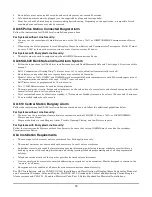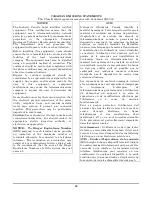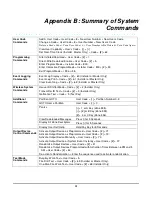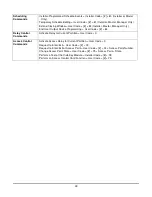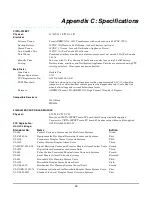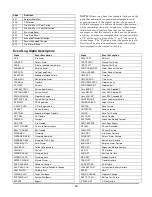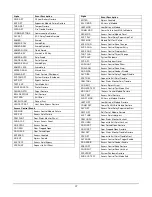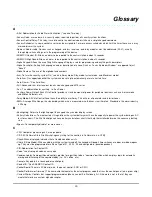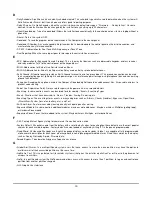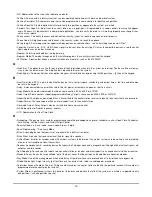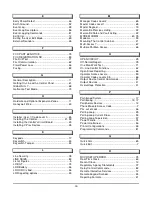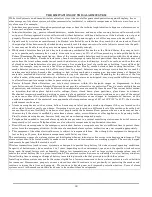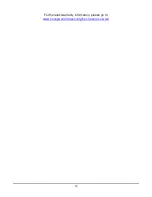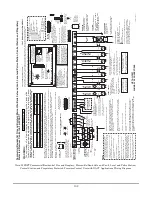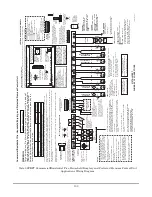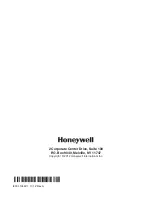
92
• PIR: Abbreviation for Passive Infra red motion detector
• Partition: An area within a total system that can be separately controlled as if it were an individual system.
• Partition Descriptor: A 4-character name that can be programmed in some controls to identify each partition.
• Partition Specific: A feature option that relates directly to a partition as opposed to the system as a whole
• Periodic Test Report: A report sent to central station on a regular basis; Programmable in some controls, but usually happens
every 24 hours; UL requirements in commercial applications; Used to verify the dialer is still working properly even though it has
not sent any reports
• Phone access: The ability to access and control the security system via touch tone phone on or off premise
• Phone Code: A 2-digit code required to access the security system via touch tone phone.
• Polling loop: A 2-wire loop used to support multiplex devices on some controls; *see also multiplex Loop and V-Plex
®
• Powerline Carrier: a.k.a. X-10, UPB: Allows signals to be sent over the existing AC wires to compatible devices; used to control
lights, appliances, and other machinery.
• Program Field: A specific address in programming
• Program Mode: The mode through which the installer programs the security system from the keypad
• Pull Station: A device that allows a manual initiation of a fire alarm, such as the 5140MPS
Q
•
Quick-Arm: The option to use the [#] key in place of the 4-digit code when turn the system on (arming); Can be used to arm away,
stay, instant, and maximum. The 4-digit code is required to disarm the system.
• Quick Bypass: Some controls have the option to bypass all faulted zones by pressing the [Bypass] key + [#] key at the keypad.
R
•
Real Time Clock (RTC): a built-in clock that keeps real time, for test reports, scheduling, and output timers; the time and date may
be set via the keypad
• Relay: A mechanical device or switch used to transfer power, or to create an open or short in a circuit
• Relay Module: An addressable module used on some controls; 4204, 4229, or 4101SN
• Relay Output: Some controls support programmable Relay Outputs; these can be 4204, 4229, or 4101SN
• Report Code: The alpha-numeric report that is transmitted to the central station receiver to identify the events that have occurred
• Report Format: The Language in which an alarm report is set to the central station
• Restricted Output: Relay Outputs may be restricted to from end-user control
• RF: Abbreviation for Radio Frequency, wireless
• RTC: Abbreviation for Real Time Clock
S
•
Scheduling: The general term used for programming something to happen on a preset schedule, such as Open/Close Schedules,
Auto-Arming, Limited Access, and Relay Output Control.
• Security Code: a.k.a. user code; access code; Always 4 digits
• Serial Programming: * See Learn Mode
• Siren: A sounding device that consists of a speaker with a built-in siren driver
• Siren Driver: A device that sends electrical (Audio) signal to a speaker
• Sniffer Mode: Installer test modes used with wireless systems to determine if any other systems are operating in the immediate
area, or to test reception of local transmitters.
• Speaker (Loudspeaker): A sounding device that consists of a paper cone and a magnetic coil through witch electrical signals are
output as audible sounds
• Split Reporting: To send specific reports to one central station or receiver and other reports to a second central station or receiver
• Standard Zones: Zones that are available “out of the box”; zones that do not require the addition of expansion modules.
• Stay Mode: One of the arming modes; when armed stay all perimeter zones are protected an all interior zones are bypassed
• Strobe/Strobe light: A high intensity light that flashes at a constant rate; rated in candle power or candela
• Subscriber Account Number: The 4- or 10-digit number used by the central station to identify the particular account; this number is
programmed into the control by the installer.
• System Wide: In partitioned systems this pertains to features and options that affect the system as a whole as opposed to only
one partition (*see also partition specific)
Summary of Contents for VISTA-32FBPT
Page 2: ......
Page 62: ...62 ...
Page 64: ...64 ...
Page 84: ...84 ...
Page 88: ...88 ...
Page 94: ...94 ...
Page 100: ...100 NOTES ...
Page 101: ...101 NOTES ...

